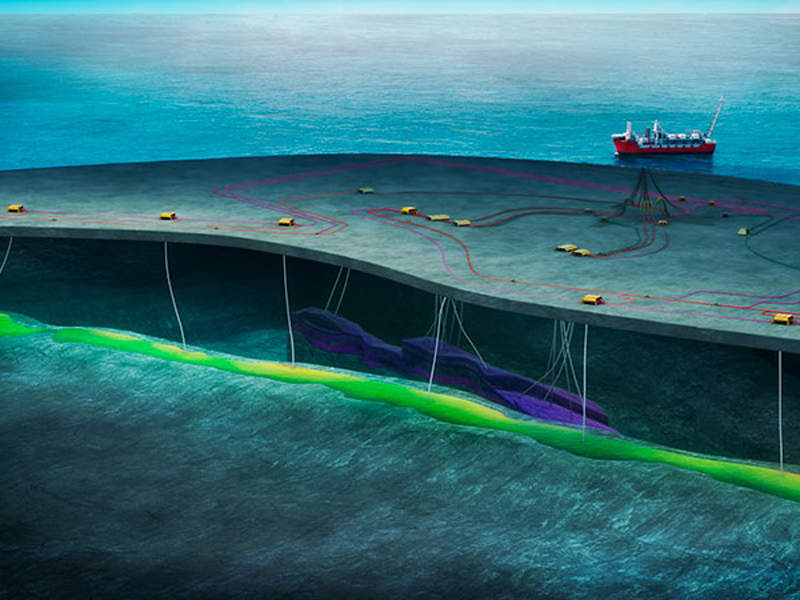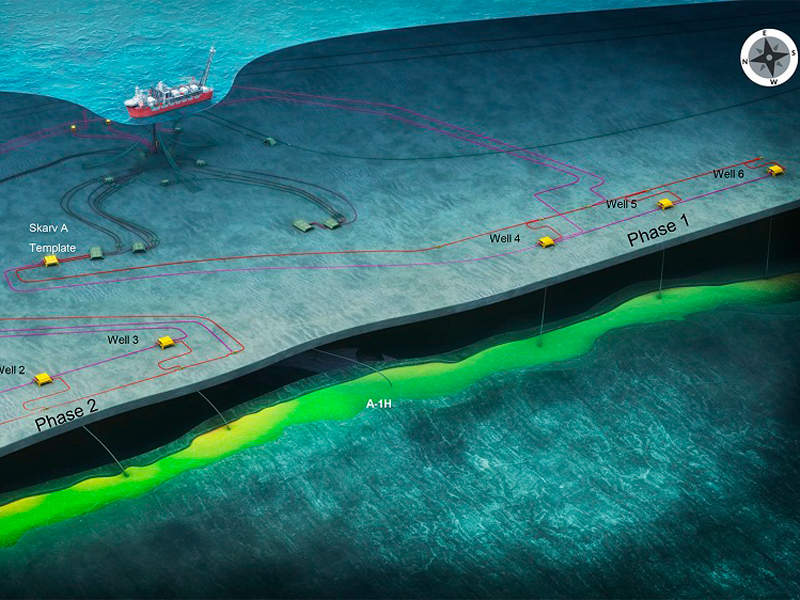The Aerfugl (Ærfugl) oil and gas field is located approximately 210km west of Sandnessjøen, in Production License (PL)212 in the Norwegian North Sea. The field lies to the west of the Skarv field and was developed in two phases, along with the Snadd Outer field.
The Ærfugl field is jointly owned by Aker BP (23.80%, operator), Equinor Energy (36.20%), Wintershall DEA Norge (28.10%) and PGNiG Upstream Norway (11.90%), while the Snadd Outer field is owned by Aker BP (30%, operator), Equinor Energy (30%), Wintershall DEA Norge (25%) and PGNiG Upstream Norway (15%).
The first and second phases of the development involved a total investment of approximately NOK8.0bn ($877.5m).
The plan for the development and operation (PDO) of the field was submitted to the Norwegian Ministry of Petroleum and Energy in December 2017 and was approved in April 2018. The phase one development was brought into production in November 2020, while phase two came on stream in November 2021, well ahead of schedule.
The Ærfugl field development is expected to increase the field life and the hydrocarbons recovery rate of Skarv field.
Geology and reserves of Ærfugl and Snadd Outer fields
The Ærfugl field lies in the Skarv Unit while the Snadd Outer field lies north of the Ærfugl field in the PL212E license.
The Ærfugl/Snadd reserve accumulation comprises a large layer of gas located in the Cretaceous sandstone of the Lysing formation. The Ærfugl field reservoir, including the Snadd Outer field, is approximately 60km-long while the width ranges between 2km and 3km with an average thickness of 30m.
Discovery and appraisal of Aerfugl fields
Ærfugl was discovered with the drilling of the 6507/5-3 wildcat well by the West Navion drillship. The well was spudded in May 2000 to a total depth of 3,000m and encountered a reservoir section of 55.2m in the Cretaceous Lange Formation.
Ærfugl was appraised by the 6507/5-6 S well drilled by the Borgland Dolphin drilling rig. The well was spudded in January 2010 to prove gas in the Late Cretaceous reservoir.
The well encountered high-quality hydrocarbon-bearing sandstones in the Late Cretaceous reservoir at a depth of 4,676m.
Located 2,800m below the seabed, Ærfugl reservoir is estimated to hold approximately 300 million barrels of oil equivalent (MMboe) with a life expectancy of 15 years.
Details of Ærfugl field development
Phase one focuses on the southern part of the Ærfugl field while phase two focuses on the northern part of the field.
The phase one development comprises three new production wells. The wells are tied-back to the existing Skarv FPSO production vessel on the Skarv field, using a 20.3km-long pipe-in-pipe flowline.
Phase two development includes three new production wells that are also tied back to the Skarv FPSO on the Skarv field.
The field was installed with a subsea production system, comprising wellheads, subsea trees, a tie-in module, pipeline end terminations, inline tees, power inlet structures, glass-reinforced plastic covers, power and service umbilical systems, umbilical riser base, 6in and 10in flexible jumpers, 7in vertical X-mas trees, satellite structures, seabed intervention and a Vectus™ subsea control system.
The hydrocarbons from both phases are transported to the Skarv FPSO for processing. The oil is subsequently loaded to shuttle tankers while the gas is piped to the Kårstø terminal through an 80km-long pipeline. The Kårstø terminal is further connected to Åsgard Transport System.
The completion of the Ærfugl field development adds five years of life to the Skarv FPSO while reducing the CO2 emissions by 30% to 40% per barrel produced from the field.
Contractors involved
The development of the project involved three major alliances comprising the Subsea Alliance between Aker BP, Subsea 7 and Aker Solutions, the Semi-submersible Rigs Alliance between Aker BP and Odfjell Drilling and Halliburton and the Modification Alliance between Aker BP and Aker Solutions.
Aker Solutions supplied the subsea system for the Ærfugl field development. The construction works for the subsea system were carried out at Aker Solutions facilities in Norway, Malaysia and the UK.
Subsea 7 was awarded the engineering, procurement, construction and installation contract for the subsea umbilical riser flowline of the project. The project management and engineering works were carried out at Subsea 7’s offices in Stavanger, Norway while fabrication works were performed at the company’s spoolbase in Vigra, Norway.
Odfjell Drilling provided Deepsea Stavanger, a semi-submersible mobile drilling facility for drilling production wells.
Other contractors include MarinePoland and GeologiQ.







